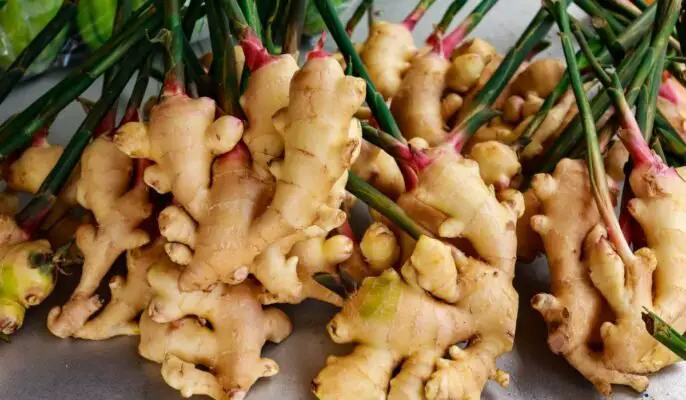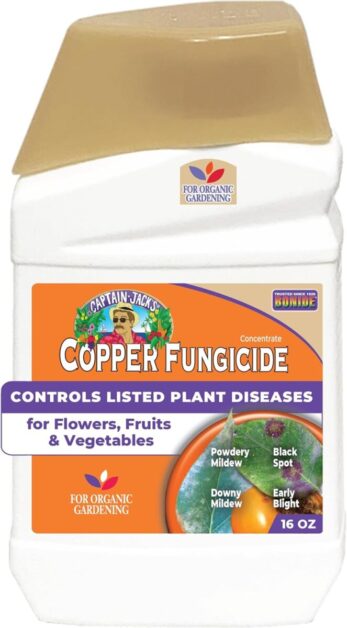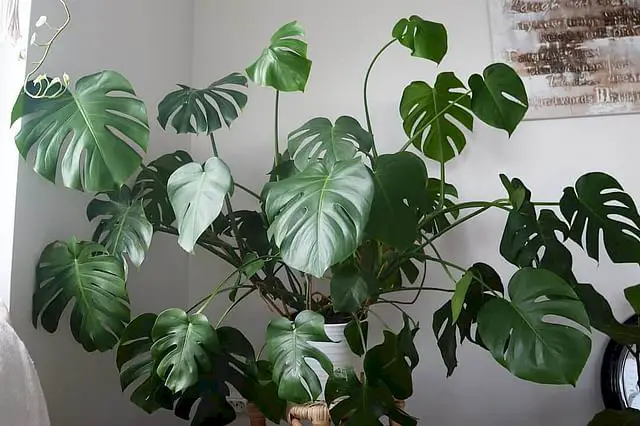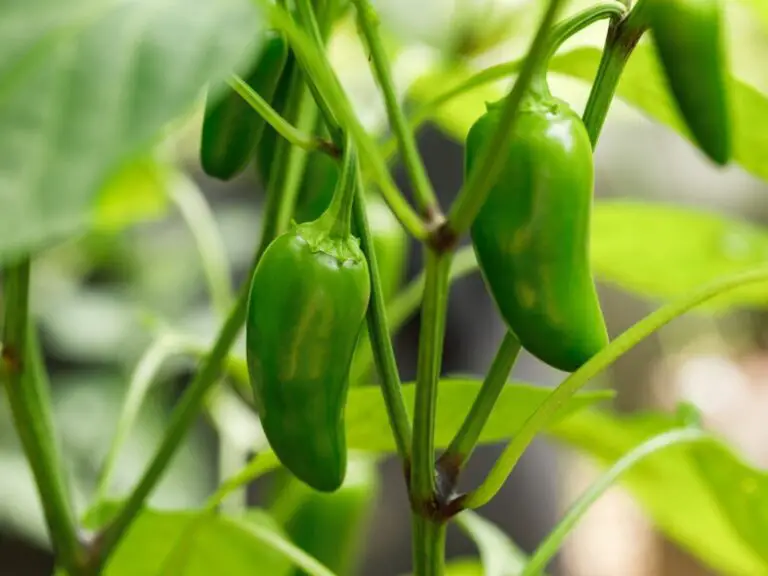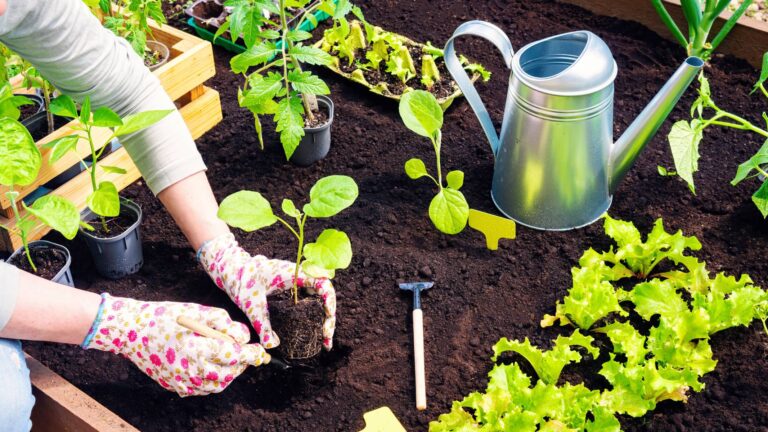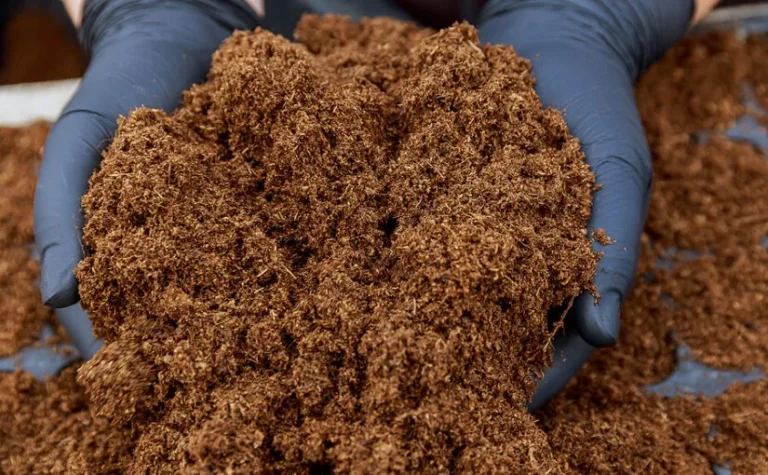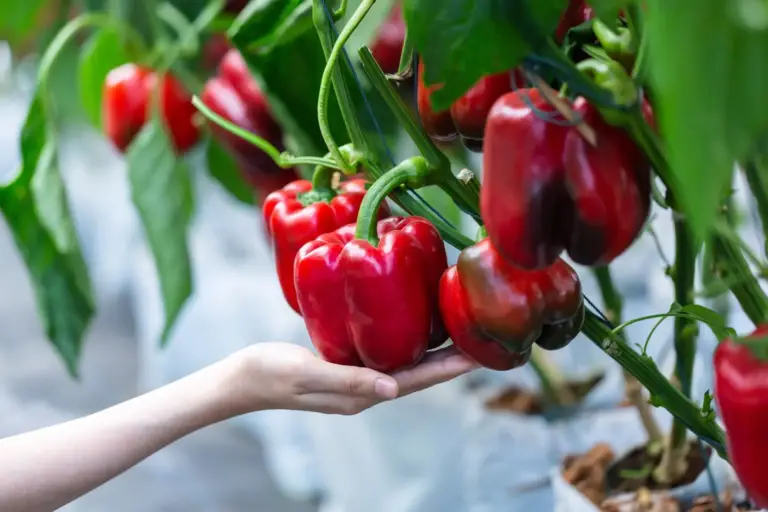Spice Up Your Garden with the Ginger Plant
“Did you know that besides adding a zesty kick to your favorite dishes, ginger can also spice up your garden? Yes, you heard it right! Forget the mundane greens and ordinary blooms; it’s time to introduce some culinary flair to your outdoor oasis. In this comprehensive guide, we’ll explore the wonders of growing your own ginger right in your backyard. From its rich history to the step-by-step process of cultivation, we’ve got you covered. Whether you’re a seasoned gardener or just starting out, get ready to delve into the world of ginger cultivation. Let’s turn your garden into a vibrant hub of flavor and fragrance. Ready to embark on this aromatic journey? Let’s dig in!”
Table of Contents
Understanding the Ginger Plant: An Overview
Ginger, scientifically known as Zingiber officinale, is a flowering plant that belongs to the family Zingiberaceae. Originating from Southeast Asia, ginger has been used for centuries due to its unique medicinal and culinary properties. With its distinctive flavor and aroma, this versatile plant has found its way into various cuisines around the world.

- Ginger plants are herbaceous perennials, reaching heights of up to three feet.
- They feature long, narrow leaves emerging from thick, underground rhizomes.
- The rhizomes, prized for their pungent and spicy taste, are the most sought-after part of the plant.
- In addition to their culinary appeal, ginger plants produce beautiful flowers in varying shades of white, pink, and yellow.
- Originating in Southeast Asia, ginger has a rich history and has fascinated humans for centuries.
- This overview sets the stage for a deeper dive into growing, nurturing, and harvesting ginger plants.
In the following sections, we will delve deeper into the specifics of growing, nurturing, and harvesting ginger plants, as well as exploring their numerous medicinal benefits and creative uses in garden design. So, let us embark on this journey of understanding and appreciation for the remarkable ginger plant.
Discovering the Origins of Ginger
Ginger, scientifically known as Zingiber officinale, is a flowering plant that belongs to the family Zingiberaceae. It is native to Southeast Asia, specifically believed to have originated in the tropical rainforests of India. The plant has a fascinating history that spans over 4,000 years, with its cultivation dating back to ancient times.
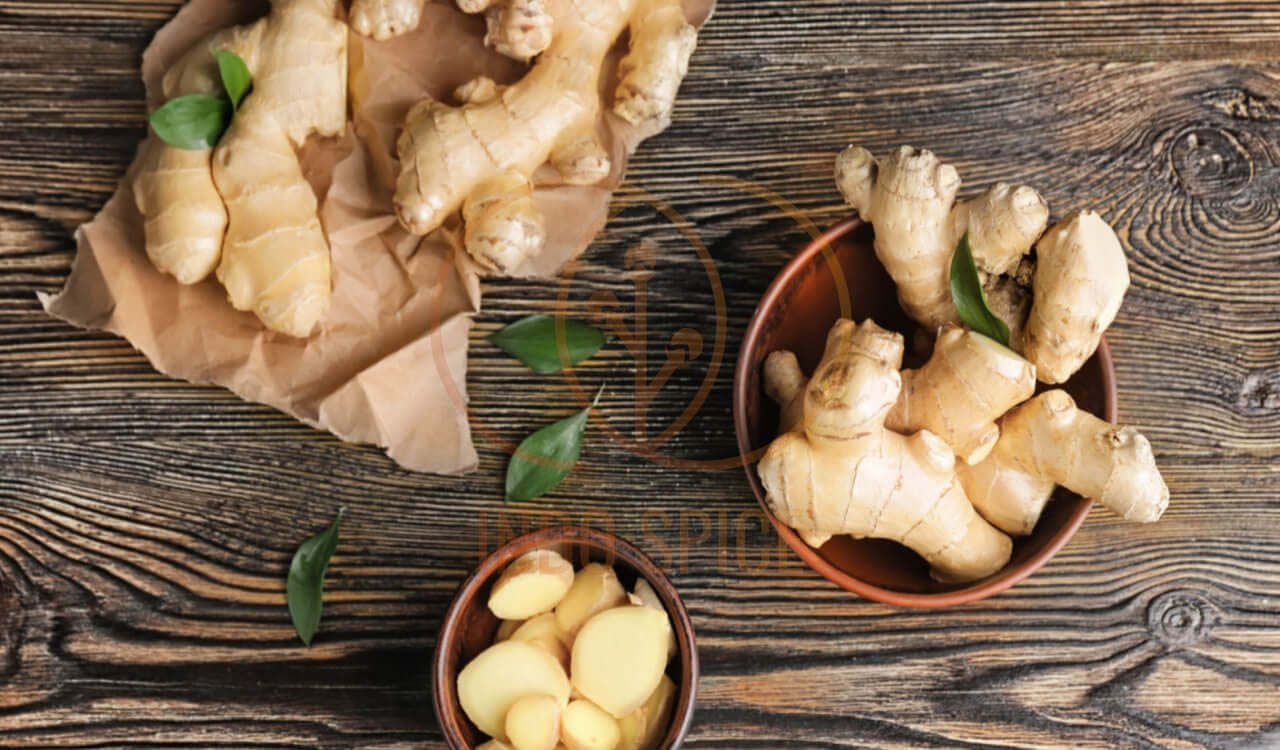
- Ancient Origins:
- Ginger was first documented in ancient China and India.
- It was prized for its unique flavor, aroma, and medicinal properties.
- Used to enhance the taste of various dishes.
- Medicinal Uses:
- Valued for its digestive benefits.
- Known to reduce inflammation and treat respiratory ailments.
- Middle Eastern Influence:
- Ginger made its way to the Middle East.
- Became a staple in traditional Arabic and Persian cuisine.
- European Introduction:
- Arab traders introduced ginger to Europe in the 9th century.
- Demand soared during the medieval period.
- Ginger was even used as a form of currency.
- Global Cultivation:
- China is the leading producer of ginger today.
- Culinary applications range from savory dishes to sweet treats.
- Ongoing Research:
- Scientists continue to uncover more health benefits of ginger.
Isn’t it fascinating how this humble spice has such a rich history and continues to play a significant role in our lives? 😊 If you have any more questions or need further information, feel free to ask! 🌱🌿
The Different Varieties of Ginger Plants
Ginger plants, scientifically known as Zingiber officinale, encompass a diverse range of varieties that differ in flavor, appearance, and growth characteristics.
| Ginger Variety | Advantages | Disadvantages | Characteristics |
|---|---|---|---|
| Common Ginger | – World-famous herb with aromatic and pungent rhizomes. | None specific to common ginger. | – Aromatic and spicy flavor. – Used in cooking, baking, and making ginger tea. – Firm, tough skin with fibrous flesh. – Concentrated gingerol in the skin gives it its pungency . |
| Beehive Ginger | – Ornamental plant with unique beehive-like yellow inflorescences. | Avoid full sun exposure to prevent burning. | – Inflorescences turn red when mature. – Thrives in a humid climate. |
| Bitter Ginger | – Also known as shampoo ginger. | None specific to bitter ginger. | – Bitter taste compared to common ginger. – Pinecone-like appearance. – Added to food flavoring and appetizers. – Requires bright, filtered light and warm soil. |
| Myoga Ginger | – Japanese-origin ginger. | None specific to myoga ginger. | – Zesty and spicy flavor. – Grows well in partial shade and moist soil. |
| Crepe Ginger | – Showy white flowers emerge from reddish-burgundy spiraled inflorescences. | None specific to crepe ginger. | – Pungent taste. – Grows under the canopy of trees in warm, humid climates. |
| Hidden Ginger | – Ornamental variety. | None specific to hidden ginger. | – Requires well-drained soil and partial shade. |
Remember that each ginger variety has its unique characteristics and uses, whether for culinary purposes or as ornamental plants.
Choosing the Perfect Spot for Your Ginger Plant
When choosing the perfect spot for your ginger plant, it is important to consider several factors to ensure optimal growth and productivity.

- Ginger thrives in warm and humid climates, preferring temperatures between 70 to 85 degrees Fahrenheit (21 to 29 degrees Celsius).
- Adequate sunlight is crucial, with at least six hours of direct sunlight daily recommended for optimal growth.
- Well-drained soil is essential for ginger plants, with a preference for slightly acidic to neutral pH levels (6.0 to 7.0).
- Sandy loam or loamy soil types are ideal, as they promote proper water drainage and root aeration.
- Heavy clay or compacted soils should be avoided, as they can cause waterlogging and hinder root development.
- Choosing a location with optimal sunlight exposure and soil drainage sets the stage for successful ginger cultivation and robust plant growth.
On the other hand, heavy clay or compacted soils should be avoided, as they can lead to waterlogging and inhibit root growth. By selecting a spot with optimal sunlight exposure and soil drainage, you can create the perfect environment for your ginger plant to thrive and flourish.
Essential Tips for Preparing the Soil
Preparation is key when it comes to successfully growing ginger plants, and one of the crucial steps in this process is preparing the soil. The quality of the soil plays a significant role in determining the health and productivity of your ginger plants. So, here are some essential tips to help you achieve the ideal soil conditions for your ginger:
1. Soil Composition: Ginger plants thrive in loose, well-draining soil. Sandy loam or loamy soil with a pH level between 5.5 and 6.5 is preferred. Avoid heavy clay soil, as it tends to retain too much water and can lead to root rot.
2. Organic Matter: Incorporating organic matter into the soil is vital for providing essential nutrients and improving soil structure. Add well-rotted compost, aged manure, or leaf mold to enrich the soil and enhance its moisture retention capabilities.
3. Moisture Management: Ginger plants require consistent moisture levels, but they don’t tolerate waterlogged soil. Ensure proper drainage by adding organic matter and creating raised beds if necessary. Regularly check the soil moisture and adjust watering accordingly to avoid both drought stress and overwatering.
By following these essential tips, you can create an optimal environment for your ginger plants to flourish. Remember, healthy soil promotes healthy plants, and it’s always worth investing time and effort in preparing it properly.
Jobe’s Organics Compost Starter is a game-changer for gardeners seeking to enrich their soil naturally. With its organic formula and nutrient-rich blend, this compost starter accelerates decomposition, leading to faster, more efficient composting. I recently put it to the test in my own backyard, and the results were impressive. Not only did it speed up the decomposition process, but it also produced rich, fertile compost that has revitalized my garden beds. Plus, the easy application and versatile use make it a must-have for both novice and experienced gardeners alike.”
- Organic Formula: Jobe’s Organics Compost Starter is made with all-natural ingredients, ensuring that your compost remains free from synthetic chemicals and harmful additives.
- Nutrient-Rich Blend: This compost starter is enriched with beneficial microbes and mycorrhizal fungi, which help break down organic matter efficiently and enrich the soil with essential nutrients.
- Easy Application: The convenient pellet form makes it simple to apply the compost starter to your compost pile or bin, ensuring even distribution and optimal results.
- Accelerated Decomposition: With its specialized formula, Jobe’s Organics Compost Starter speeds up the decomposition process, allowing you to create rich, fertile compost in less time.
- Versatile Use: Whether you’re a seasoned gardener or just starting out, this compost starter is suitable for a wide range of composting applications, including indoor and outdoor use.
- Price: Some users may find Jobe’s Organics Compost Starter to be relatively expensive compared to other composting additives on the market.
- Packaging Size: While the product is available in various package sizes, those with larger composting needs may find themselves needing to purchase multiple containers, which can be less cost-effective.
- Odor: Like most composting materials, Jobe’s Organics Compost Starter may emit a slight odor during the decomposition process, which could be a concern for those composting in close proximity to their living spaces.
- Requires Regular Application: To maintain optimal composting conditions, you’ll need to replenish the compost starter periodically, which may require ongoing investment and effort.
- Limited Availability: Depending on your location, Jobe’s Organics Compost Starter may not be readily available at local garden centers or stores, requiring you to purchase it online or seek alternative products.
Propagating Ginger: From Seed to Plant
To propagate ginger from seed to plant, you will need to follow a few key steps.
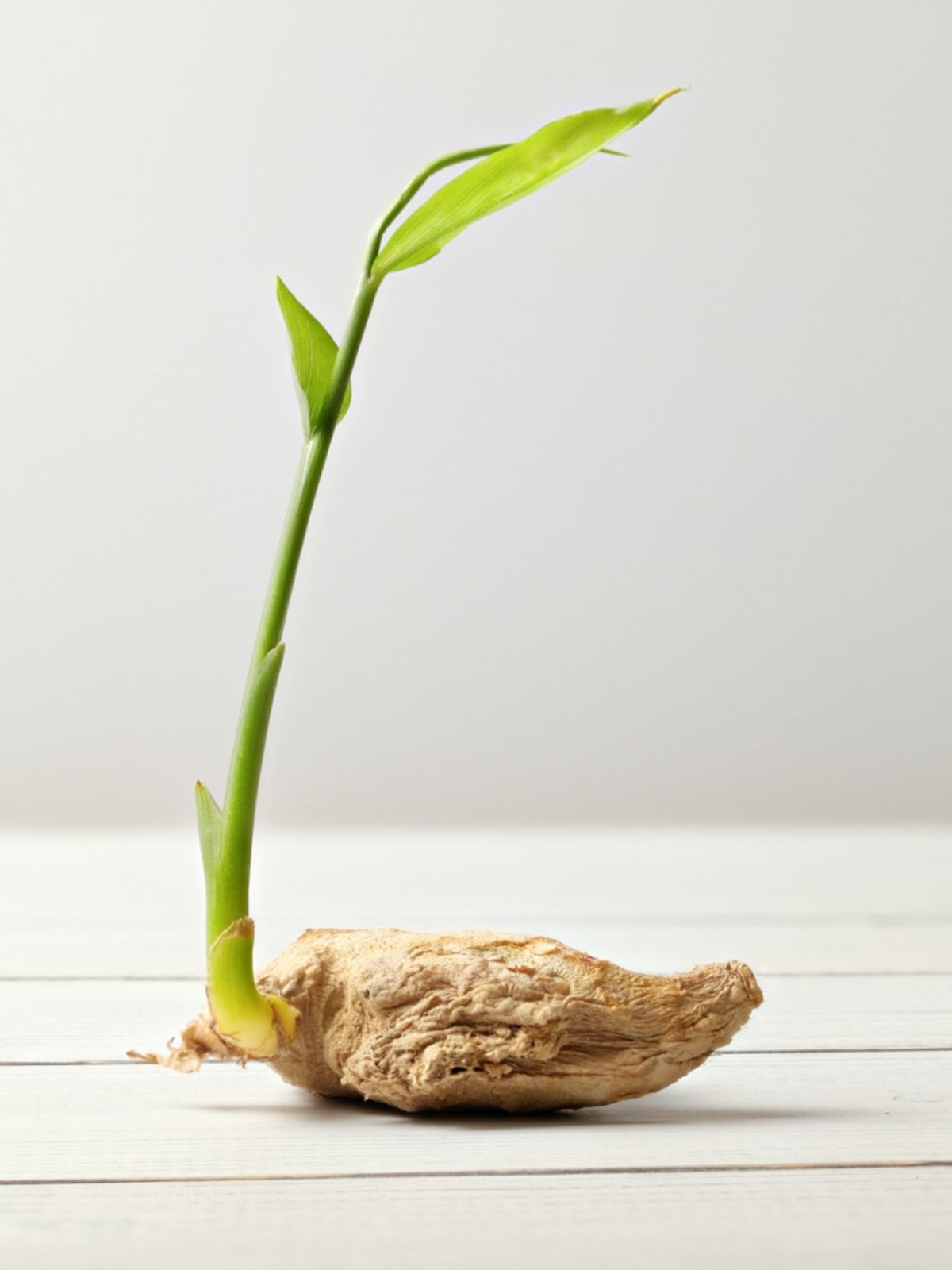
- Selecting Rhizomes:
- Gather fresh ginger rhizomes from a reputable source or an established ginger plant.
- Look for plump and firm rhizomes, as they are more likely to yield healthy plants.
- Preparing Soil Mix:
- Use a well-draining soil mix enriched with organic matter.
- Ginger thrives in loose, friable soil that allows for proper root development.
- Planting Ginger Rhizomes:
- Fill a planting tray or container with the soil mix.
- Leave enough space between each rhizome for growth.
- Place the ginger rhizomes on the soil surface, ensuring that the bud eyes face upward.
- Gently press them down into the soil, leaving about an inch of space between each rhizome.
- Cover the rhizomes with a layer of soil mix and lightly water the tray to settle the soil.
- Ideal Environment:
- Keep the tray in a warm and humid environment.
- Maintain a temperature between 75-85°F (24-29°C).
- Shoot Emergence:
- In a few weeks, new shoots will emerge from the soil.
- Transplanting:
- Once the shoots are about 6-8 inches tall, transfer the ginger plants.
- Space them about 8-10 inches apart.
- Provide ample sunlight and regular watering for proper growth.
Remember, patience and care are essential for successful ginger cultivation. Soon, you’ll have flourishing ginger plants ready for harvest! 🌱🌿 If you have any more questions or need additional information, feel free to ask! 😊
Nurturing Your Ginger Plant: Watering and Sunlight Requirements
Watering and providing adequate sunlight are crucial aspects of nurturing your ginger plant. To ensure healthy growth and optimal production, it is essential to understand the specific watering needs and sunlight requirements unique to ginger plants.
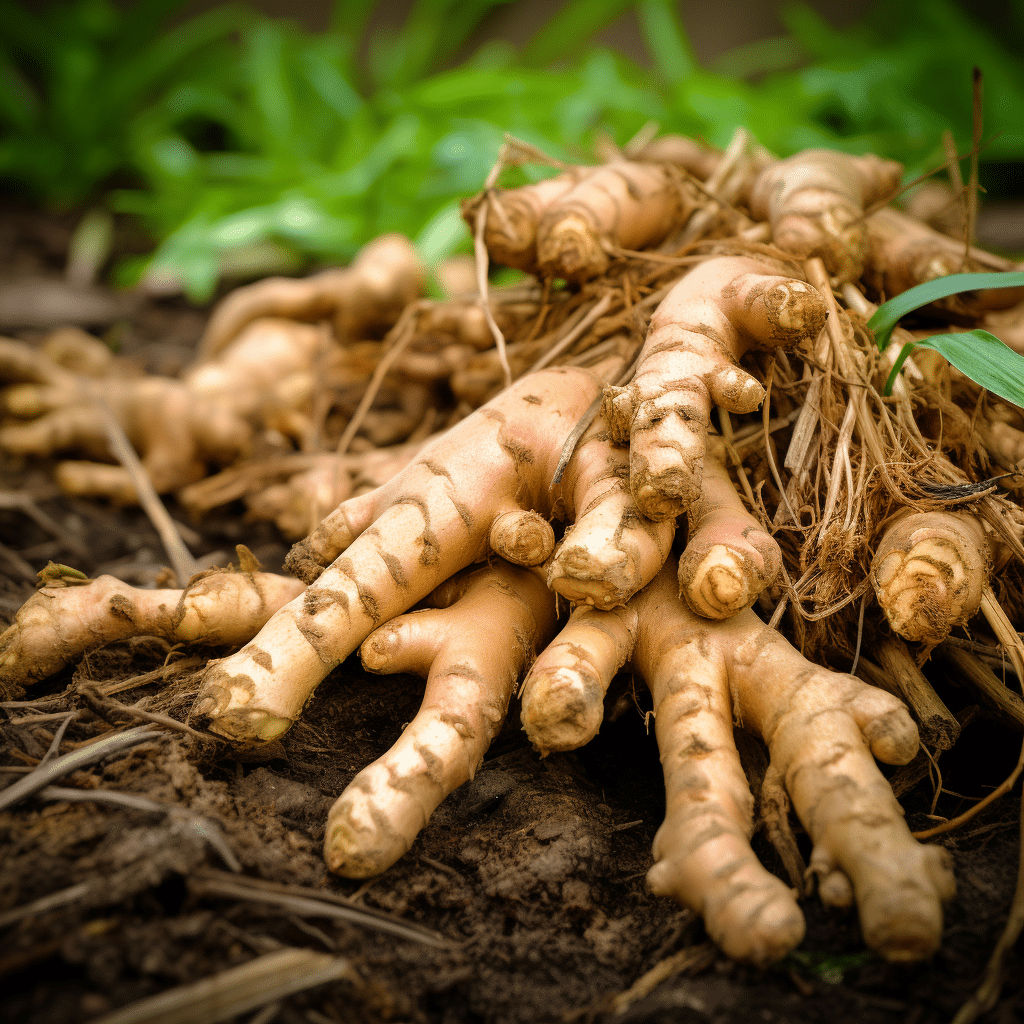
Use moist but well-draining soil.
Avoid overwatering to prevent root rot.
Keep the soil consistently damp but not waterlogged.
Water when the top inch of soil feels dry to the touch.
Ginger plants have shallow roots, so frequent, light watering is preferable.
Ginger plants prefer partial shade or filtered light.
Too much direct sunlight can lead to sunburned leaves or stressed plants.
Ideal location: Dappled sunlight or bright, indirect light for a few hours each day.
If growing indoors, place near a bright window or use grow lights.
By adequately meeting the watering and sunlight requirements of your ginger plant, you are setting the stage for its successful growth and development.
Fertilizing Your Ginger Plant: Dos and Don’ts
| Dos | Don’ts |
|---|---|
| Use a balanced fertilizer with equal parts nitrogen, phosphorus, and potassium. | Avoid over-fertilizing, as it can lead to excessive foliage growth at the expense of rhizome development. |
| Apply fertilizer sparingly, following manufacturer’s instructions for dosage. | Don’t use high-nitrogen fertilizers, as they may encourage lush foliage but hinder rhizome formation. |
| Incorporate organic matter into the soil, such as compost or well-rotted manure, to improve soil fertility naturally. | Refrain from fertilizing during the dormant period, typically in late fall or winter. |
| Consider using a slow-release fertilizer to provide nutrients gradually over time. | Avoid applying fertilizer directly to the plant’s foliage, as it may cause burning. |
| Monitor soil nutrient levels regularly and adjust fertilization accordingly to maintain optimal growth. | Don’t fertilize newly planted ginger until it has established a strong root system, typically after 2-3 months. |
Common Pests and Diseases to Watch Out for
It is essential for gardening enthusiasts to be aware of the common pests and diseases that can affect ginger plants in order to prevent and manage any potential issues.

- Ginger Aphids (Pentalonia nigronervosa):
- Tiny insects that infest ginger plants.
- Damage leaves by sucking sap, leading to stunted growth and distorted leaves.
- Untreated infestations weaken the plant and make it susceptible to other diseases.
- Control measures:
- Regular monitoring.
- Use insecticidal soap or neem oil.
- Root Rot:
- Fungal disease affecting ginger plants.
- Caused by pathogens like Pythium or Fusarium spp.
- Symptoms: wilting, yellowing leaves, foul odor around roots.
- Prevention:
- Ensure well-draining soil.
- Avoid overwatering.
- Consider fungicides for severe infections.
Remember to keep a close eye on your ginger plants and take preventive measures to maintain their health! 🌱🌿
“After trying Bonide 811 Copper Fungicide in my garden, I’m impressed by its effectiveness. It swiftly tackled fungal diseases like powdery mildew and black spot, providing robust protection for my plants. The organic formula was a huge plus, aligning with my commitment to eco-friendly gardening practices. Application was a breeze with its liquid form, ensuring thorough coverage without hassle. However, I did notice some staining on treated surfaces, which might bother some gardeners. Yet, overall, its ability to safeguard plants while being gentle on them makes it a valuable addition to any gardener’s arsenal.”
“Despite its efficacy, Bonide 811 Copper Fungicide does require frequent reapplication, especially in humid climates. This could increase usage and cost over time. Additionally, its effectiveness may wane with prolonged use, necessitating vigilance in disease management. pH sensitivity is another factor to consider, requiring careful monitoring for optimal results. While it’s generally safe for organic gardening, there’s a potential environmental impact to be mindful of. Despite these drawbacks, its ability to combat fungal diseases makes it a reliable choice for plant protection.”
✅ Organic Formula: This fungicide is formulated with copper octanoate, a naturally occurring compound, making it suitable for organic gardening practices and environmentally conscious consumers.
✅ Residual Activity: With its long-lasting protection, Bonide 811 Copper Fungicide continues to safeguard plants even after application, providing ongoing defense against fungal infections.
✅ Easy Application: The liquid formulation of this fungicide allows for convenient spraying onto plant foliage, ensuring thorough coverage and maximum effectiveness.
✅ Safe for Plants: Unlike some chemical fungicides, Bonide 811 Copper Fungicide is gentle on plants when used as directed, minimizing the risk of phytotoxicity or damage to foliage.
❌ Application Frequency: To maintain effective disease control, repeated applications of this fungicide may be necessary, especially in areas with high humidity or frequent rainfall, which could increase overall usage and cost.
❌ Limited Residual Period: While Bonide 811 Copper Fungicide offers residual activity, its effectiveness may diminish over time, requiring regular reapplication to sustain protection against fungal diseases.
❌ pH Sensitivity: The efficacy of copper-based fungicides like Bonide 811 Copper Fungicide can be influenced by pH levels in the spray solution, necessitating careful monitoring and adjustment for optimal performance.
❌ Potential Environmental Impact: Although considered relatively safe for organic gardening, copper-based fungicides can accumulate in soil over time, posing potential risks to beneficial microorganisms and aquatic ecosystems if used excessively.
Harvesting Ginger: The Right Time and Technique
Harvesting ginger at the right time and using the correct technique is essential to ensure the best flavor and quality of the harvested roots. Ginger is typically ready for harvest when the leaves start to turn yellow and begin to die down. This is usually around 8 to 10 months after planting, depending on the variety and growing conditions.
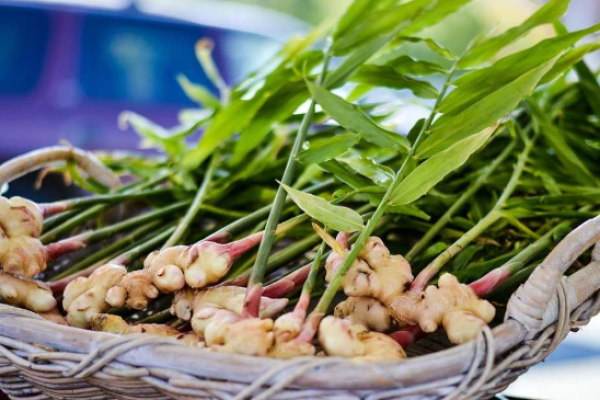
- Begin by loosening the soil around the base of the ginger plant using a garden fork or hand trowel.
- Take care to avoid damaging the roots as you loosen the soil.
- Firmly grasp the base of the plant and lift it out of the ground gently.
- Shake off excess soil or rinse the roots lightly to remove dirt.
- Handle the ginger roots delicately to prevent damage or bruising.
- Trim off the foliage, leaving a short stem attached to each root.
- Avoid cutting or scraping the ginger’s skin to maintain its shelf life and flavor.
- Store the harvested ginger in a cool, dry place or refrigerate it in a sealed container to preserve freshness.
By following these harvesting techniques and timing the harvest correctly, you can enjoy the full flavor and benefits of homegrown ginger in your culinary creations or medicinal preparations.
Culinary Uses of Ginger: Beyond the Spice Rack
Ginger, with its warm and spicy flavor, has long been a staple in kitchens around the world. But its uses go beyond just being a spice in cooking. In fact, ginger has a wide range of culinary applications that can elevate your dishes to new levels of taste and sophistication.
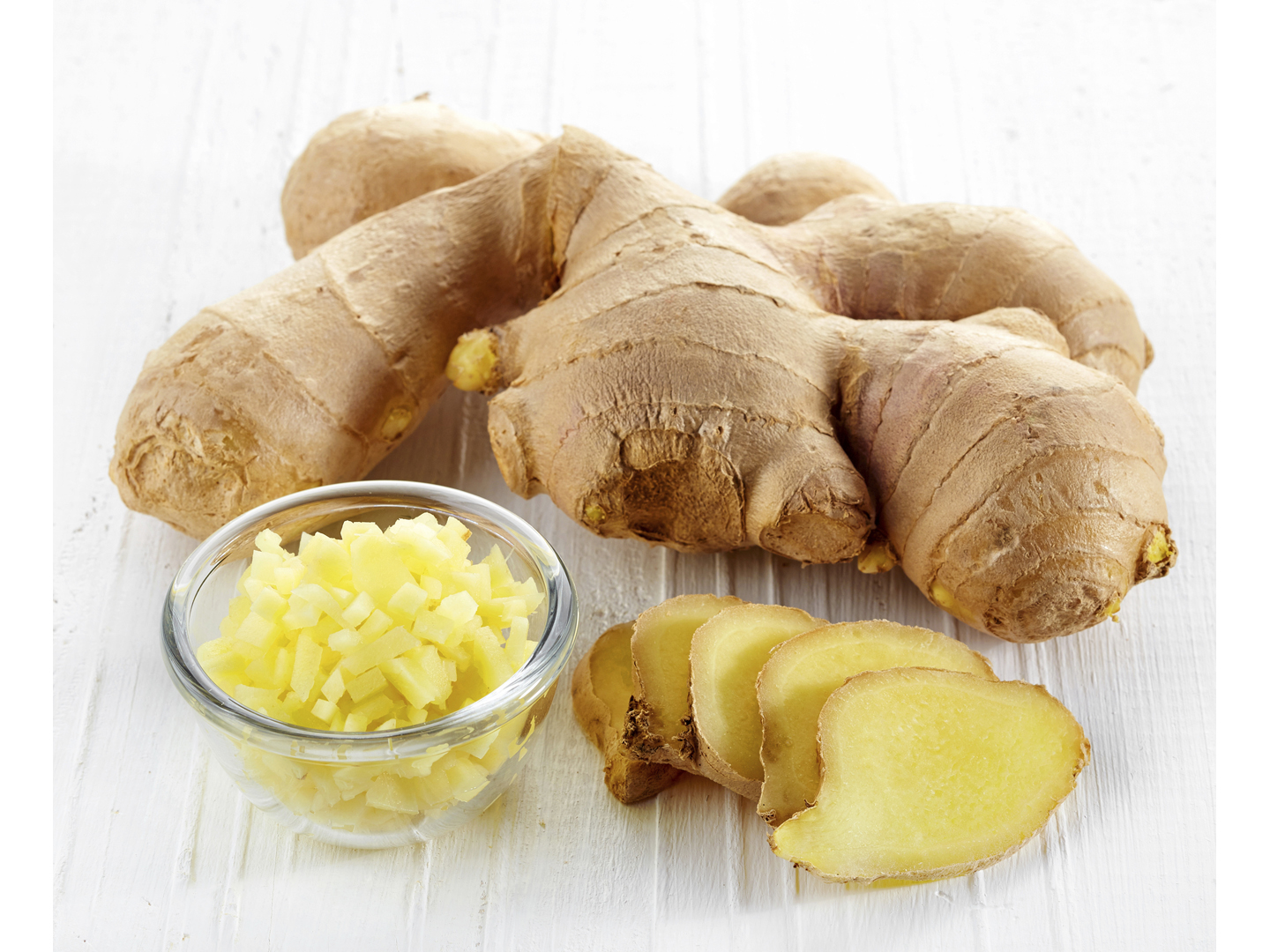
- Flavor Enhancement:
- Ginger adds depth and complexity to both sweet and savory dishes.
- Enhances stir-fries, curries, cookies, cakes, and more.
- Balances acidity in sauces, dressings, and marinades.
- Natural Meat Tenderizer:
- Grated ginger can break down proteins in meat.
- Adds tenderness and juiciness to cooked meat.
- Ginger Tea:
- Made by steeping fresh ginger in hot water.
- Comforting, soothing, and offers health benefits.
- Warm and spicy notes.
- Beverage Twist:
- Ginger adds flavor to cocktails, mocktails, and homemade sodas.
As you can see, the culinary uses of ginger are vast and varied, offering a multitude of options for experimentation and creativity in the kitchen. So why limit yourself to using ginger as a mere spice in your cooking? Explore the possibilities and let this versatile ingredient take your dishes to new heights of flavor.
Exploring the Medicinal Benefits of Ginger
Ginger, known scientifically as Zingiber officinale, has been used for centuries in traditional medicine systems for its various medicinal properties.

- Digestive Comfort:
- Ginger contains gingerols and shogaols.
- Stimulates digestive enzymes and improves gut motility.
- Natural remedy for indigestion, bloating, and nausea.
- Anti-Inflammatory Properties:
- Ginger reduces inflammation in the body.
- Alleviates symptoms of arthritis and inflammatory bowel disease.
- Pain Relief:
- Ginger extract inhibits inflammatory chemicals.
- Promising alternative to NSAIDs for chronic pain management.
- Antimicrobial Properties:
- Helps combat certain bacteria and fungi.
- Antioxidant Activity:
- Protects against oxidative stress and cellular damage.
Ginger truly offers a wealth of health benefits! 🌱🌿
Creative Ways to Incorporate Ginger into Your Garden Design
Ginger, with its vibrant green foliage and delicate white flowers, is not only a versatile herb and spice, but it can also add a touch of exotic beauty to your garden design. Incorporating ginger into your garden can be a creative way to enhance the visual appeal and functionality of your outdoor space. From adding a tropical flair to creating unique borders, here are a few inspiring ideas to incorporate ginger into your garden design.

- Tropical Oasis:
- Description: Create a lush tropical paradise using ginger plants as focal points.
- How to Achieve It:
- Combine ginger plants with other tropical favorites like palms, ferns, and orchids.
- The vibrant leaves and tall stems of ginger will add visual interest.
- Transport yourself to an exotic destination right in your backyard.
- Unique Border Plant:
- Description: Use ginger as a natural border to define garden areas.
- How to Achieve It:
- Plant ginger’s elegant stems along pathways or around flower beds.
- The vibrant green foliage adds an exotic touch.
- Consider traditional ginger varieties or variegated shell gingers for an eye-catching edge.
- Edible Gingers Varieties:
- Description: Incorporate edible ginger for both beauty and practicality.
- How to Achieve It:
- Grow culinary or medicinal ginger varieties.
- Enjoy fresh flavors for cooking or use it medicinally.
- Strategically place these useful herbs throughout your garden.
- Potted Ginger Plants:
- Description: Add exotic beauty to outdoor living spaces.
- How to Achieve It:
- Plant ginger in decorative pots on patios or balconies.
- Choose pots that complement your outdoor decor.
- Enjoy the visual appeal and fragrance up close.
Remember to tailor these ideas to your specific garden space and preferences. Ginger’s versatility makes it a delightful addition to any garden! 🌱🌿
Frequently Asked Questions about Growing Ginger Plants
Can ginger plants be grown indoors?
Yes, ginger plants can be successfully grown indoors, provided that they receive the right conditions. To grow ginger indoors, choose a large pot with good drainage and fill it with a well-draining potting mix. Place the ginger rhizome, or root, with the eyes facing upwards, about 2 inches deep into the soil.
Keep the soil consistently moist but not waterlogged. Ginger plants require bright, indirect sunlight, so place them near a window where they can receive at least 4-6 hours of filtered sunlight per day. Maintain a temperature of around 75-85°F (24-29°C) and humidity levels of 50-60%. With proper care and attention, you can enjoy a thriving ginger plant right in your own home.
How long does it take for ginger plants to grow?
The growth timeline of ginger plants can vary depending on various factors such as the type of ginger, growing conditions, and care provided. Generally, ginger plants take about 8-10 months to reach maturity and be ready for harvest. However, it’s important to note that ginger plants have a long growing season and are considered a slow-growing plant.
From the time of planting, it can take several weeks for the ginger rhizome to sprout, and then the plant will slowly develop with new leaves and stems. It’s important to be patient and provide consistent care to ensure healthy growth. Remember that ginger plants are tropical in nature, so they prefer warm temperatures and high humidity levels for optimal growth.
Watch video for more information:
FAQ
How long does it take for a ginger plant to grow?
Ginger plants typically take around 8 to 10 months to reach maturity and be ready for harvest.
Are ginger plants susceptible to any specific diseases?
Yes, ginger plants can be susceptible to diseases such as root rot, bacterial wilt, and fusarium wilt. It is important to maintain proper soil drainage and avoid overwatering to prevent these diseases.
Can I grow ginger plants indoors?
Yes, ginger plants can be grown indoors as long as they receive sufficient sunlight, warmth, and proper care. Consider using a large container and placing it near a window that gets plenty of sunlight.
How often should I water my ginger plant?
Ginger plants prefer moist soil, so it is important to water them regularly. Aim to keep the soil consistently moist, but not waterlogged. Watering once or twice a week is usually sufficient, but adjust based on the specific moisture needs of your plant.
Can I grow ginger in a colder climate?
Ginger plants thrive in tropical and subtropical regions, but they can also be grown in colder climates. Consider planting ginger in containers that can be brought indoors during colder months or grown in a greenhouse to provide the necessary warmth.
Can I harvest ginger multiple times from the same plant?
Yes, ginger plants can be harvested multiple times. Once the ginger rhizomes are mature, you can harvest some while leaving the rest to continue growing. This allows the plant to produce more ginger over time.
How should I store harvested ginger?
Harvested ginger should be cleaned, dried, and stored in a cool and dry place. You can store it in a paper bag or wrap it in a paper towel to absorb any excess moisture. It can typically last for several weeks in these storage conditions.
Are there any companion plants that benefit ginger growth?
Yes, ginger plants can benefit from companions such as turmeric, garlic, and lemongrass. These plants help deter pests and provide a mutually beneficial environment for growth.
Can I use ginger leaves for cooking or other purposes?
While ginger leaves are not commonly used for culinary purposes, they can be infused to make a tea or used as a natural insect repellent. However, the main culinary use of ginger comes from the rhizomes.
Is ginger suitable for container gardening?
Yes, ginger can be grown in containers, making it suitable for those with limited space or wanting to control its growth. Choose a large container with good drainage and use a well-draining potting mix specifically designed for container gardening.
Can I grow ginger from store-bought ginger root?
Yes, you can grow ginger from store-bought ginger root. Look for fresh, plump ginger root with visible growth buds or “eyes.” Plant the ginger root in a pot or directly in the ground, making sure the buds are facing up.
Are there any cultural or historical significance associated with ginger plants?
Ginger has a rich cultural and historical significance. It has been used for centuries as a culinary spice, medicinal herb, and even as a symbol of wealth and prestige in some cultures. Its aromatic and flavorful properties have made it a highly valued plant worldwide.

Studied Agricultural Engineering-Plant Protection at University of California, Davis.
Head of Content writing team at Southelmontehydroponics.com

